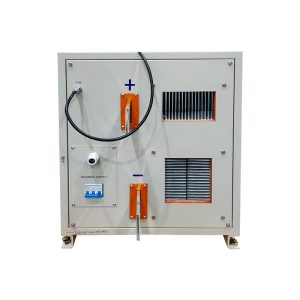Nickel plating for industrial parts begins with degreasing and light acid etching to ensure a clean surface. A copper underlayer, typically 5–10 μm, is applied to enhance adhesion. Electrolytic plating deposits nickel to the required thickness, usually 20–40 μm for machinery parts.
Electrical connectors, gearbox shafts, and small motor components benefit from corrosion resistance and moderate wear protection. Platers monitor plating current and bath temperature closely; edges and recesses are often plated at reduced current to maintain uniform thickness.
In one example, a 35 μm nickel layer on a gearbox shaft passed a 500-hour salt spray test. Adhesion is checked by bend testing or scratch tests before assembly.
Operators monitor the bath daily, checking nickel levels, temperature, and pH. Small particles are filtered out to avoid uneven plating. Adhesion tests, like bend or tape checks, are performed on random samples. Minor polishing or touch-ups may be done on visible parts to ensure uniform appearance. These simple routines keep the nickel coating reliable over time.




